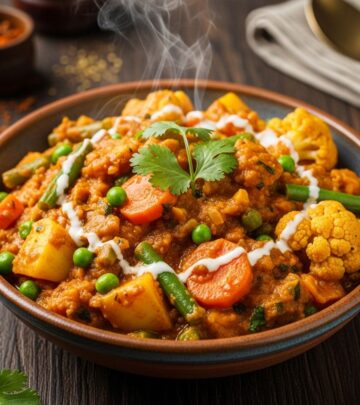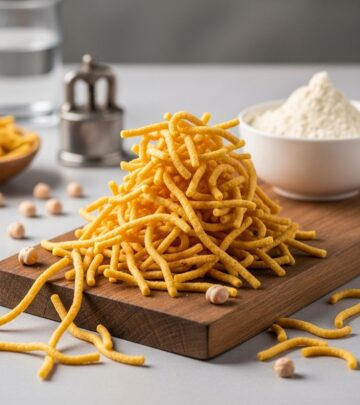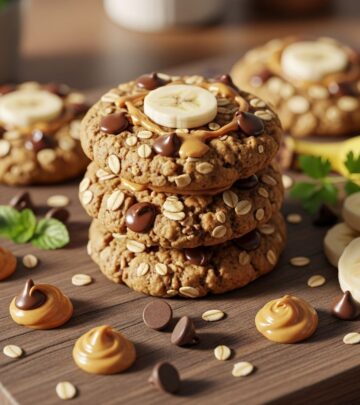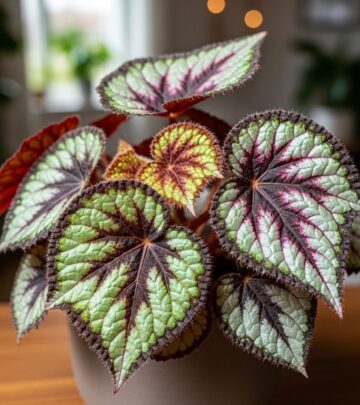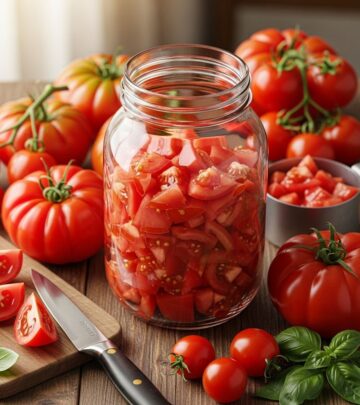Small Palm Trees: 17 Best Dwarf Varieties For Home Gardens
Discover the top dwarf and small palm trees perfect for compact gardens, patios, or indoor green spaces.

Image: HearthJunction Design Team
17 Best Small Palm Trees for Home Gardens
If you dream of adding a lush, tropical atmosphere to your garden but don’t have the space for a towering palm, you’re in luck. Small palm trees, often called dwarf palms, offer all the elegance and visual drama of their larger cousins—without overwhelming your yard or patio. Whether you’re working with a compact outdoor area, hoping to create a potted statement piece, or simply need a palm that suits cooler climates, there’s a small palm tree perfectly suited for your needs.
Why Choose Small Palm Trees?
- Space-saving: Their modest height—typically under 25 feet—makes them ideal for patios, courtyards, and small gardens.
- Versatility: Many varieties thrive in containers, as indoor decorations, or as striking landscape accents outdoors.
- Manageable Care: Smaller palms are easier to prune, maintain, and protect from pests or harsh weather.
Below, we’ll explore the best small palm trees, offer expert care tips, and help you select the perfect palm to complement your hardiness zone, garden style, and maintenance preferences.
Choosing the Right Palm: Key Factors
Before diving into our list, consider these important factors to ensure your palm tree thrives:
- Climate Suitability: Some palms are drought-tolerant while others need humidity and warmth year-round.
- Maximum Height: All palms listed here reach 25 feet tall or less—many remain much smaller with regular pruning.
- Light Requirements: Most palms love bright, indirect sunlight but some tolerate shade or indoor conditions.
- Growth Habit: Palms come as single-trunk or clustering types—choose what best fits your intended space.
- Maintenance: Consider pruning needs, watering schedules, and resistance to common pests or diseases.
Top 17 Small Palm Trees for Gardens and Indoors
Here are our favorite dwarf and compact palms—each selected for beauty, adaptability, and ease of care.
1. Pygmy Date Palm (Phoenix roebelenii)
- Height: 6-12 feet
- Best for: Containers, patios, small garden beds
The pygmy date palm is a classic, arching palm with fine, feathery fronds. It thrives in both sun and partial shade and is popular for indoor and outdoor use. Regular pruning keeps it tidy and healthy.
2. Sago Palm (Cycas revoluta)
- Height: 3-10 feet
- Best for: Containers, entryways, Zen gardens
Despite its name, Sago Palm is not a true palm but a cycad. Its slow growth, symmetrical form, and glossy leaves make it an excellent low-maintenance choice for small spaces or container gardens. Note: Sago is toxic to pets.
3. Parlor Palm (Chamaedorea elegans)
- Height: 4-6 feet
- Best for: Indoor decor, shaded patios
Well-loved for indoor gardens, the parlor palm tolerates low light and dry air, making it perfect for homes and offices.
4. Lady Palm (Rhapis excelsa)
- Height: 6-12 feet
- Best for: Indoors, patios, formal gardens
The lady palm’s upright, multi-stemmed habit and deeply divided leaves give it a refined look. It’s ideal for containers or as a privacy screen in shaded areas.
5. European Fan Palm (Chamaerops humilis)
- Height: 6-15 feet
- Best for: Mediterranean and drought-prone gardens
A hardy, drought-tolerant palm with fan-shaped leaves and a dense, bushy form—great for border plantings or accent containers.
6. Dwarf Palmetto (Sabal minor)
- Height: 5-10 feet
- Best for: Native plant gardens, wet soils
This cold-hardy North American native thrives in swampy areas, making it unique among palms for boggy gardens.
7. Bottle Palm (Hyophorbe lagenicaulis)
- Height: 10-12 feet
- Best for: Coastal, tropical gardens
Named for its swollen trunk, this palm is prized for its sculptural silhouette and ornamental value. Best suited to frost-free regions or as a potted accent.
8. Needle Palm (Rhapidophyllum hystrix)
- Height: 4-6 feet
- Best for: Cold climates, shade gardens
One of the hardiest palms, the needle palm is slow-growing and nearly maintenance-free, tolerating temperatures as low as -10°F.
9. Windmill Palm (Trachycarpus fortunei)
- Height: 10-20 feet
- Best for: Temperate zones, poolside planting
This cold-tolerant palm sports a slender trunk and rounded, fan-like fronds, ideal for tight spaces or as a dramatic focal point.
10. Dwarf Majesty Palm (Ravenea hildebrandtii)
- Height: 5-8 feet
- Best for: Large containers, indoor atriums
Compact and lush, the dwarf majesty palm brings tropical flair to both indoor and outdoor settings. Requires consistent moisture and high humidity.
11. Areca Palm (Dypsis lutescens)
- Height: 6-10 feet indoors
- Best for: Indoor air purification, privacy screens
The Areca’s feathery fronds and bushy habit make it a favorite for bright indoor corners or as a living privacy fence in mild climates.
12. Triangle Palm (Dypsis decaryi)
- Height: 10-15 feet
- Best for: Architectural accents, xeriscapes
With a distinctive triangular leaf arrangement, this rare palm stands out in arid and subtropical gardens alike.
13. Cascade Palm (Chamaedorea cataractarum)
- Height: 6-8 feet
- Best for: Shaded beds, riparian gardens
Thrives in moist, low-light conditions and creates lush, cascading foliage. Excellent for indoor planters or as a groundcover.
14. Dwarf Sugar Palm (Arenga engleri)
- Height: 8-12 feet
- Best for: Subtropical landscapes, privacy hedges
This clumping palm offers fragrant flowers and is tolerant of wind, salt, and moderate cold. Its dense growth is ideal for screening.
15. Miniature Chusan Palm (Trachycarpus wagnerianus)
- Height: 6-10 feet
- Best for: Small gardens, containers
Essentially a dwarf version of the windmill palm, with stiffer, wind-resistant foliage and compact form.
16. Bamboo Palm (Chamaedorea seifrizii)
- Height: 4-12 feet
- Best for: Indoor planters, humid rooms
Named for its cane-like stems, the bamboo palm is well-suited to low-light rooms and helps filter indoor air pollutants.
17. Dwarf Fan Palm (Livistona chinensis ‘Subglobosa’)
- Height: 6-10 feet
- Best for: Containers, tropical garden beds
This slow-growing palm displays graceful, fanned leaves and adapts well to pots or protected outdoor beds.
How to Incorporate Small Palms into Your Garden Design
Small palms lend lush texture and a sense of tropical luxury to any landscape. Here are some ways to use them:
- Cluster several varieties together for a multi-layered canopy effect
- Line walkways or borders for structure and elegance
- Use single specimens in containers on patios or entryways
- Combine with flowering tropicals for vibrant color contrasts
- Pair with rocks or water features for Zen or Mediterranean themes
Care Tips for Small Palm Trees
Planting Outdoors
- Choose a well-draining soil and a location with adequate sunlight for your chosen variety
- Dig a hole twice as wide as the root ball but no deeper
- Water thoroughly after planting and mulch to retain moisture
Growing Indoors
- Use pots with drainage holes and a rich, loose potting mix
- Place in bright, indirect light—some tolerate low light
- Water when the top inch of soil is dry, and provide humidity via misting or a pebble tray
General Maintenance
- Fertilize during the growing season with a palm-specific slow release formula
- Prune dead or damaged fronds regularly to encourage healthy growth
- Watch for pests such as spider mites or mealybugs, especially on indoor palms
- Repot container palms when they become root-bound to prevent stunted growth
Comparison Table: Small Palm Tree Options
| Palm Variety | Mature Height | Best Use | Cold Hardiness |
|---|---|---|---|
| Pygmy Date Palm | 6-12 ft | Container, patio | 22°F (-5°C) |
| Lady Palm | 6-12 ft | Indoor, shade | 20°F (-6°C) |
| European Fan Palm | 6-15 ft | Xeriscape, borders | 10°F (-12°C) |
| Needle Palm | 4-6 ft | Cold hardy, shade | -10°F (-23°C) |
| Bottle Palm | 10-12 ft | Tropical, containers | 30°F (-1°C) |
| Areca Palm | 6-10 ft | Indoor, privacy | 32°F (0°C) |
Frequently Asked Questions (FAQs)
Q: Can small palm trees be grown indoors?
A: Yes, many small palm trees such as parlor palm, lady palm, and areca palm thrive indoors with proper light and humidity.
Q: How often should I water my small palm tree?
A: Watering needs vary by variety and environment, but as a rule of thumb, water when the top inch of soil feels dry. Avoid letting palms sit in soggy soil.
Q: What’s the best palm for cold climates?
A: Needle palm and windmill palm are among the cold-hardiest options, tolerating temperatures well below freezing.
Q: Are any small palms low maintenance?
A: Yes. Sago palm, needle palm, and European fan palm are notably low-care and resilient.
Q: Can small palm trees stay small with pruning?
A: While palms cannot be drastically dwarfed, regular pruning of old fronds and growing in containers will help maintain a compact size.
Final Thoughts
No matter your space, climate, or garden style, there’s a small palm tree to suit your needs. By selecting the right variety and providing a little basic care, you can enjoy the relaxed elegance of palms even in the tiniest garden or indoor nook. With options ranging from ultra-compact container specimens to bold outdoor statement pieces, the world of dwarf palm trees is as rich and varied as your imagination allows. Happy planting!
References
Read full bio of Shinta

